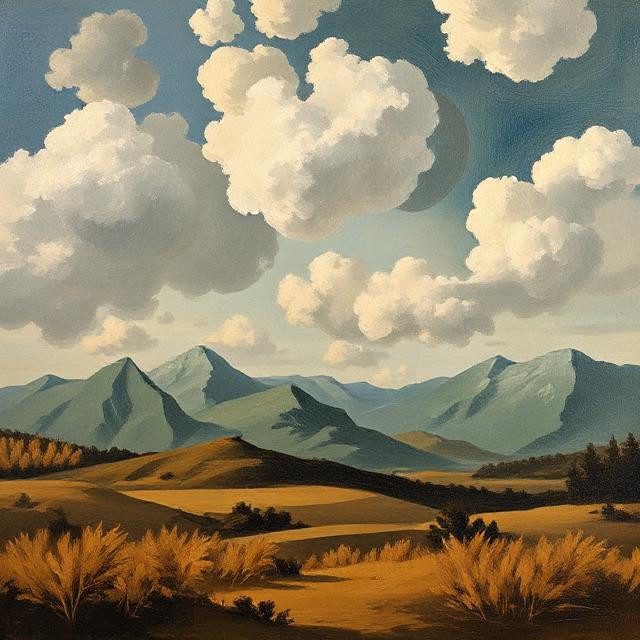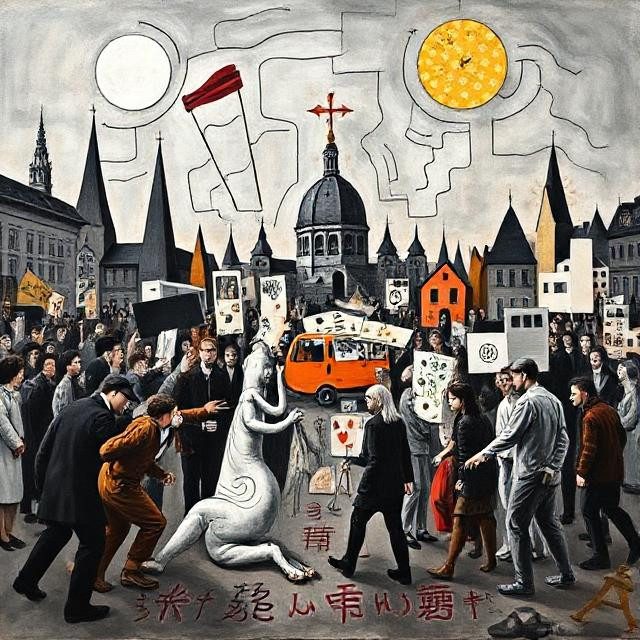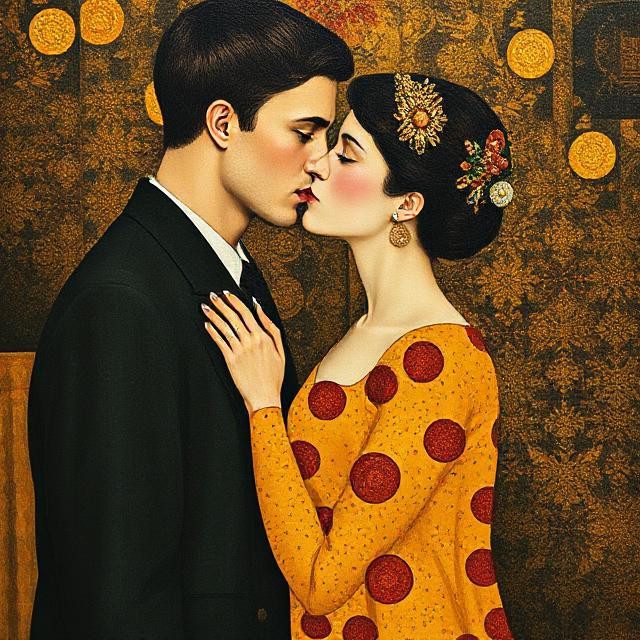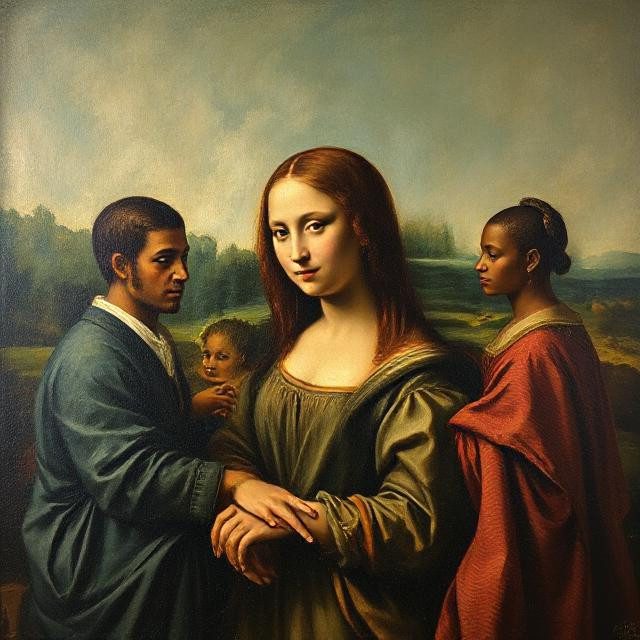In the modern world of art, some workshop outclass time, sticking around mighty symbols of creativeness, civilization, and mortal expression. Iconic masterpieces, whether they are the Renaissance portraits of Leonardo da Vinci, the surreal landscapes of Salvador Dalí, or the bold abstracts of Pablo Picasso, have inspired generations of artists and art addicts. But what happens when these immortal workshop are reimagined with a ultramodern twisting?
“Masterpieces: A Modern Take on Classic Paintings” invites you to explore how the old masters’ artworks can be reinterpreted through contemporary techniques, technologies, and aesthetics. In this guide, we will explore the art of recreating classic paintings, offer tips for modernizing these masterpieces, and provide insight into how this fusion of the past and present can produce new visual experiences. Whether you’re a painter, art enthusiast, or someone looking for a unique project to challenge your creativity, this article will guide you through the process and ignite your imagination.
Recreation of Classic Paintings
Recreating classic canvases is not exactly about copycatting art it’s about recognizing the genius of those who approached before us while likewise probing particular formulation. Artists frequently come across to the history for encouragement, embracing ways, subject thing, and compositions to grass their own special delusions By revisiting classic masterpieces, we not only gain a deeper appreciation for the historical context in which these works were created but also open ourselves to new ways of interpreting the world around us.
Ultramodern reinterpretations of imitable art challenge the observer to suppose critically about how art evolves over time. They inquire meaningful problems What do these workshop express in moment’s world? How can we fascinate with them from a contemporary outlook? By gripping on the exception of streamlining a masterpiece, artists can breathe substitute memoir into iconic workshop, fabricating them applicable to present’s audiences.
What Does a Modern Take on Classic Paintings Mean?
A ultramodern take on a classic painting does not inevitably mean fully making over or diverting the initial work. rather, it involves redefining the piece through a ultramodern lens, which can include:
1. Advance Color Palettes: Classic paintings were frequently created applying conventional dyes that were accessible at the time. In a ultramodern reinterpretation, artists might take a contemporary shade palette that resonates with usual trends or evokes distinctive emotional styles.
2. Using New Media: The ultramodern period has brought around new technologies and stuff into the art world. Artists may operate digital media, photography, hybrid media, or indeed 3D essentials to reinterpret traditional workshop in provoking new ways.
3. Cultural Contextualization: Classic works were frequently created in distinct artistic and literal surroundings. A ultramodern take on these workshop can give a analysis on contemporary developments, blending the history and current to involve with moment’s society in special ways.
4. Pop Culture Influence: Some artists integrate essentials of pop culture similar as road art, pictorial design, or contemporary iconography into their reinterpretations of famed works, creating an engaging context.
5. Minimalism and Abstraction: Ultramodern reinterpretations of classic art can likewise touch streamlining pieces, researching minimalism, or presenting ideal fundamentals that convert the original subject matter.
Famous Masterpieces and Their Ultramodern Reinterpretations
Several iconic paintings have inspirited ultramodern reinterpretations, and by concluding these transformations, we can gather perception into how classic works endure to elaborate.
1. Leonardo da Vinci’s “Mona Lisa”
The ‘ Mona Lisa’ is one of the most famed pictures in art history, understood for her enigmatic smile and enduring elegancy. A ultramodern reaction on the ‘ Mona Lisa’ could affect:
– Reinterpreting her smile through ultramodern looks, maybe assimilating digital manipulation or pictorial design strategies.
– Employing a contemporary latest twisting, streamlining her apparel to mirror ultramodern styles or integrating bold, A-grade elements.
– Creating an interactive digital interpretation of the painting, where the observer can modify elements of her formulation.
2. Vincent van Gogh’s “Starry Night”
Van Gogh’s ‘ Starry Night’ is famed for its swirling sky and blazing intensity. ultramodern interpretations could include
–Re-imagining the sky in a ultramodern, digital environment with animated colors and digital brushstrokes.
– integrating elements of civil life or ultramodern geographies into the scene, similar as cityscapes or ultramodern architecture.
– Using 3D mapping or protuberance art to animate the swirling stars, contributing the imaging an ethereal, interactive quality.
3. Edvard Munch’s “The Scream”
Munch’s ‘The Scream’ evokes a sense of existential dread that resonates even today. A modern take might explore:
– Reinterpreting the figure’s anguish with contemporary themes like social media anxiety, digital isolation, or the modern world’s pressures.
– Using abstract or geometric forms to represent the internal chaos Munch’s figure experiences.
– Employing mixed media or digital art to convey the scream through sound, light, or movement, bringing a dynamic, multi-sensory experience to the viewer.
4. Pablo Picasso’s “Guernica”
Picasso’s ‘Guernica’ remains one of the most powerful anti-war paintings. A modern reinterpretation of ‘Guernica’ could:
– Incorporate elements of modern warfare, such as drones or digital images, reflecting current global conflicts.
– Use digital animation or virtual reality to create an immersive experience that makes viewers feel as though they are inside the chaotic scene of the painting.
– Introduce more diverse perspectives or global narratives into the work, reflecting the impact of modern warfare on people from different parts of the world.
5. Gustav Klimt’s “The Kiss”:
Klimt’s ‘The Kiss’ is known for its luxurious gold leaf and intimate depiction of love. Modern versions of ‘The Kiss’ could:
– Experiment with mixed media, such as metallic paints, digital textures, and vibrant patterns to update its ornate feel.
– Depict diverse couples and relationships, adding a contemporary cultural layer to the piece.
– Incorporate elements of pop art or street art, blending the traditional elegance of Klimt’s work with modern visual language.
How to Recreate a Masterpiece with a Modern Twist: Step-by-Step Guide
Now that we’ve explored what a modern take on classic paintings entails, let’s walk through the process of recreating a famous masterpiece with a modern twist. Whether you’re an experienced artist or a beginner, these steps will help guide you through the process.
Step 1: Choose Your Masterpiece
Select a painting that resonates with you and offers plenty of room for creative interpretation. Research the painting’s historical context and artist’s intent to understand the original work’s deeper meaning. This will inform your modern reinterpretation.
Step 2: Plan Your Modern Interpretation
Determine how you will update the piece for modern times. Will you change the color palette, alter the subject matter, or incorporate new media? Think about what contemporary elements you want to bring into the work while respecting the essence of the original masterpiece.
Step 3: Gather Your Materials
If you are working with traditional media like oil paints, acrylics, or watercolors, gather the necessary materials. If you are working digitally, select your preferred software (such as Adobe Photoshop, Illustrator, or Procreate) or digital painting tools. Be sure to experiment with textures and brushes to match your envisioned style.
Step 4: Recreate the Composition
Start by sketching the basic composition of the original painting. Don’t worry about creating an exact replica; focus on getting the proportions and layout right. You can choose to keep the composition the same or adjust it according to your modern interpretation.
Step 5: Add Your Personal Touches
Begin adding modern elements to the painting. This could involve using contemporary color schemes, introducing modern iconography, or experimenting with abstraction. If you’re working digitally, consider using layering techniques, textures, or even 3D effects to create depth and a contemporary feel.
Step 6: Refine and Finish
Take the time to refine your work, paying attention to small details that will bring it to life. Whether you are painting or working digitally, make sure that the final product reflects both the original masterpiece’s essence and your creative vision.
The Beauty of Reinterpreting Art: Why It Matters
Recreating famous paintings with a modern twist isn’t just an artistic exercise; it’s a way to engage with art history in a meaningful and personal way. By reinterpreting classic masterpieces, we are invited to explore how art changes over time, how culture shifts, and how modern issues are reflected in visual form.
Art is never static it evolves, adapts, and reflects the world around it. By bringing new life to iconic works, artists can offer fresh perspectives on age old themes, showing how the past can continue to inform and inspire the present.
Conclusion
These Classic Paintings encourages you to look at iconic works with new eyes. It challenges you to ask questions about what these paintings mean in today’s world and how you can reinterpret them through your own creative lens. Whether you’re a seasoned artist or simply looking for a fun project, modernizing a masterpiece is a way to engage deeply with art history while creating something uniquely yours. So, pick up your brush, choose your masterpiece, and reimagine the past for the present your masterpiece awaits.

















Art has no boundaries, and this article proves it.So cool to see classic art reimagined in modern styles.
Yes! Art constantly bridges the past and present, and seeing those styles merge is both powerful and inspiring.
Want a more casual, humorous, or professional tone? I’m happy to tweak it!